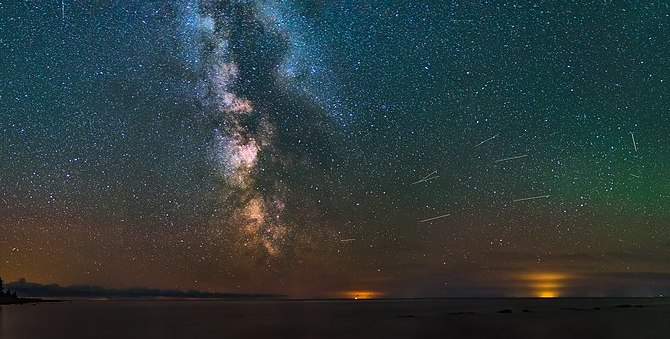Astronomers stunned by massive black hole discovery.
Others are reading now
Astronomers have recently discovered the most massive stellar black hole known within our Milky Way galaxy. Nestled in the constellation Aquila, merely 2,000 light-years from Earth, this black hole, dubbed Gaia BH3, has a mass 33 times greater than our Sun, surpassing the previously known heaviest, Cygnus X-1, by a significant margin.
This finding, published today in Astronomy and Astrophysics, comes from a team led by Pasquale Panuzzo of the Observatoire de Paris, utilizing data from the European Space Agency’s Gaia mission.
An Accidental Discovery
The Gaia mission, launched in 2013, aims to create the most detailed three-dimensional map of our galaxy. The data revealing Gaia BH3 was originally intended for another purpose, but a routine review unexpectedly showed that a well-known star was actually orbiting a black hole—a black hole of a mass that astounded the researchers.
Also read
“When I saw the results for the first time, I was convinced there was a problem in the data. I could not believe it,” Panuzzo told Gizmodo. “Now, I feel I’ve really done the discovery of my life!”
This revelation was supported by several ground-based observatories and cutting-edge instruments such as the UVES at the Very Large Telescope in Chile, and the HERMES spectrograph in Spain. These tools helped confirm the black hole’s mass through precise orbital measurements and the application of Kepler’s laws, alongside innovative spectroscopic techniques that detect how fast the companion star is moving.
Stellar black holes like Gaia BH3 form from the gravitational collapse of massive stars, which contrasts with the supermassive kind, like Sagittarius A* at our galaxy’s center, weighing in at about 4 million solar masses. Panuzzo elaborates that Gaia BH3 likely originated from a star 40 to 50 times our Sun’s mass, with its considerable bulk suggesting it came from a metal-poor star—a relic from the early galaxy.
“The stars were present in our galaxy only in its infancy, so we cannot see the formation of new massive black holes in our galaxy anymore,” said Panuzzo, providing insight into the rarity of such discoveries in our cosmic neighborhood.
This discovery not only challenges existing models of stellar evolution but also enhances our understanding of gravitational waves, which are ripples in spacetime caused by such massive objects. With this black hole now known, the community awaits further observations by instruments like GRAVITY at the ESO’s Very Large Telescope Interferometer, which could shed more light on how this black hole interacts with its environment.
This milestone in astronomy not only opens new doors for understanding the life cycles of stars but also underscores the unexpected discoveries still waiting in the vast expanse of our galaxy.


